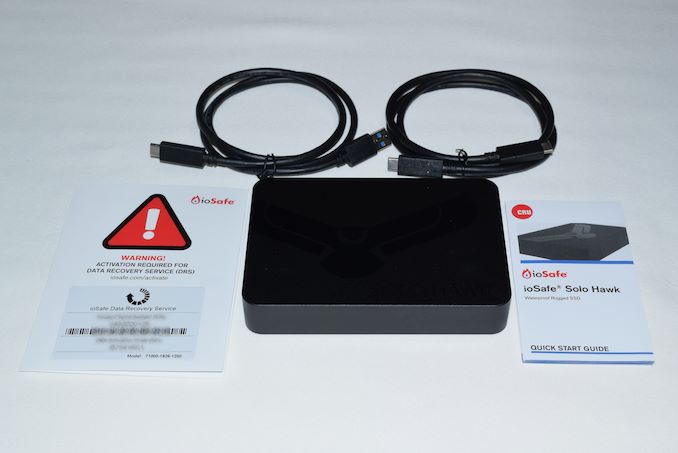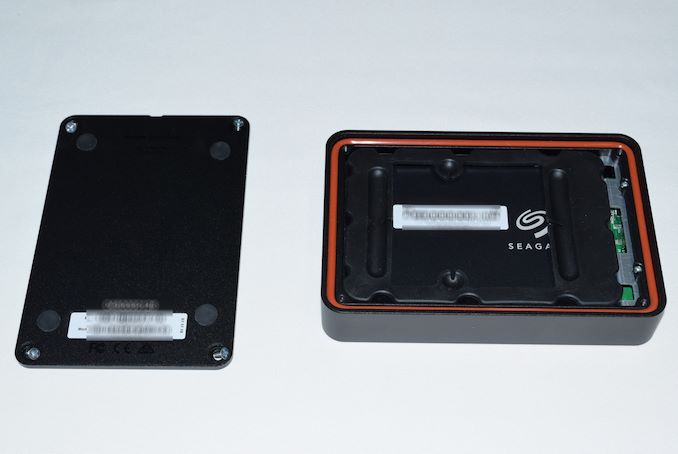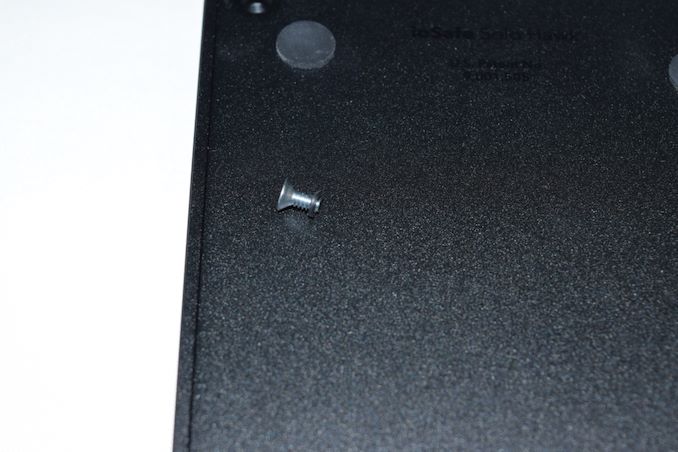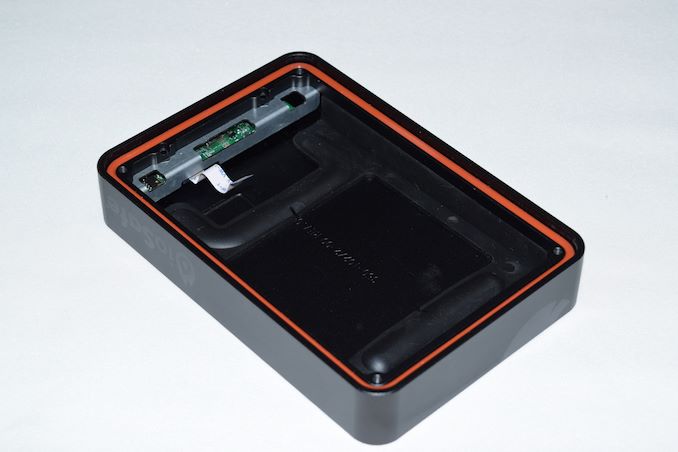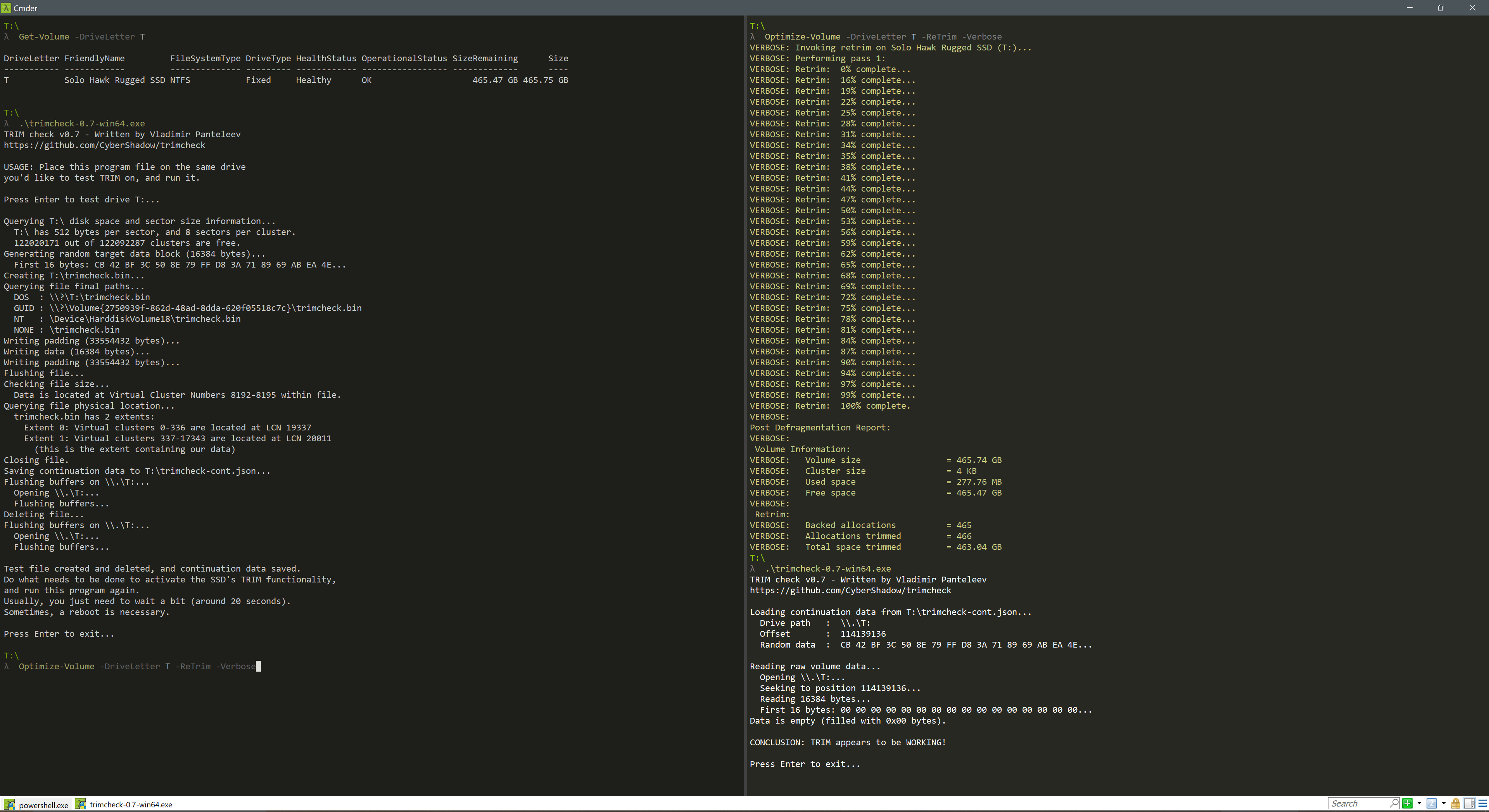
Original Link: https://www.anandtech.com/show/14818/cru-iosafe-solo-hawk-rugged-ssd-review
CRU ioSafe Solo Hawk Rugged SSD Review
by Ganesh T S on September 4, 2019 9:00 AM EST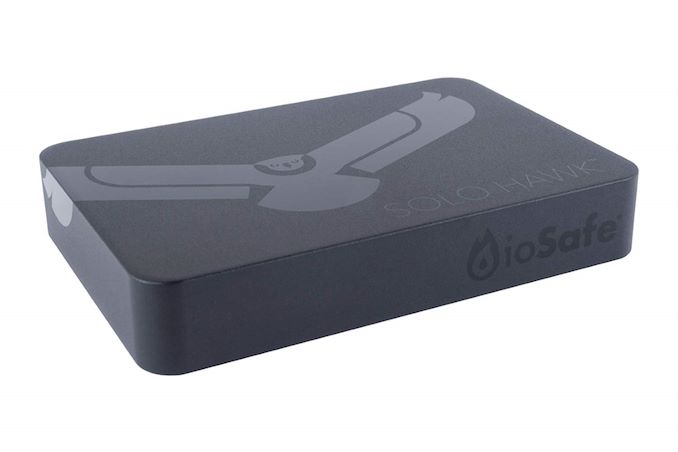
ioSafe's disaster-resistant solutions cater to an important niche in the storage market. In mid-2018, the company was acquired by CRU. The Solo Hawk Rugged SSD is one of the first ioSafe-branded products to be launched after the acquisition. The portable SSD is a 2.5" SATA drive in a waterproof and crush-resistant enclosure that can also withstand extreme weather conditions and chemical environments.
Introduction
ioSafe's products are known for their disaster-resistant nature, with the data being protected against extreme conditions (including heat). The Solo Hawk, on the other hand, is marketed as a rugged SSD. It is the second portable bus-powered product from ioSafe, a follow-up to the Rugged Portable SSD. Unlike other ioSafe-branded products, the Solo Hawk is not fireproof. As we have seen earlier, fireproofing requires a gypsum enclosure super-saturated with water. This greatly increases the weight of the end product, rendering it unsuitable for a mobile device. Therefore, ioSafe has focused on other ruggedness aspects in the design of the Solo Hawk.
The Solo Hawk is not the first rugged SSD in the market - that credit goes to the LaCie Rugged Thunderbolt from 2014 (which had a USB 3.0 interface in addition to Thunderbolt 2). LaCie has since released a newer version - the Rugged Thunderbolt USB-C SSD. G-Technology also has a play in this market segment with their G-DRIVE mobile SSD. The Solo Hawk carries a price premium over both these products, but brings in several distinct improvements in the ruggedness.
The Solo Hawk Rugged SSD is made of solid aluminum, and weighs in at 490 grams (without the cable needed for data transfer). Dimensions of 99mm x 145mm x 26mm make the unit appear as a sturdy and well-built enclosure for a 2.5" drive. It has a USB Type-C interface (USB 3.1 Gen 2 / 10 Gbps) and a Kensington lock slot.
In addition to the main unit, the package includes a quick-start guide and a warranty card (including details of the data recovery service activation and directions to redeem value additions such as the Genie Timeline Professional backup software). Two 40 in. cables (1x USB 3.1 Gen 2 Type-C to Type-A Male and 1x Type-C to Type-C Male) are also included.
In the rest of the review, we take a look at the internals of the product, and find out what makes the Solo Hawk rugged. This is followed by the presentation of some performance benchmarks. Finally, we take a look at some miscellaneous aspects such as power consumption, TRIM support, and how the Solo Hawk compares against similar products in the market across various metrics.
The Solo Hawk Internals
Disassembling a rugged product is an interesting proposition. Prior to that, the patent behind the product is worthy of analysis. The Solo Hawk is based on the Low cost portable data storage device and docking station patent assigned in 2015. In this section, the patent is analyzed step by step and the corresponding teardown photos are provided.
The patent presents a rugged portable data storage device as well as a fireproof docking station concept. Only the aspects related to the first disclosure are used in the design of the Solo Hawk. The relevant figures from the patent are reproduced below.
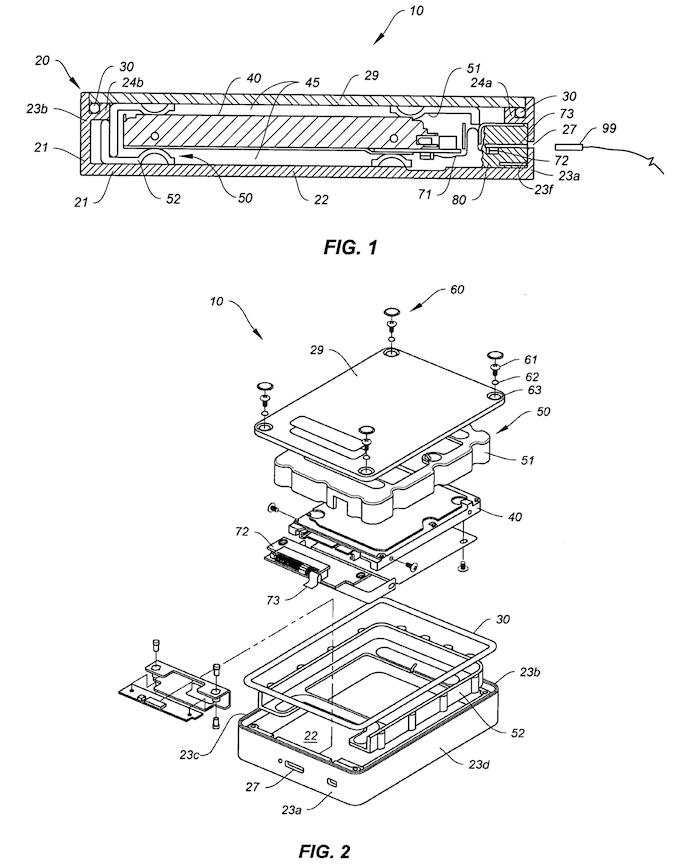
Figures 1 and 2 from US Patent 9001505
The top figure shows the sectional view while the bottom one is a more detailed version of a typical disclosure implementation. The enclosure is a two-piece implementation with a housing (21 in Fig. 1) and a cover (29 in Fig. 1). The disclosure states that the housing is a monolithic, metallic structure that could be made of aluminum, steel or titanium. The Solo Hawk uses an aluminum enclosure to achieve a good balance between cost and crush-resistance. Markings 23a-23d form the walls of the housing, at the top of which a recessed 'lip' (24a-24d) exists to place a sealing gasket (30).
The patent claims that the design construction allows for easy removal of the internal storage device. The four rubber feet on the underside of the Solo Hawk had to be peeled away to expose screws that could be easily removed. The photograph above shows the housing and the cover, along with the red sealing gasket. Elastomeric suspension segments (51 and 52 in Fig. 2) impart the impact shock absorption capability, and the photograph below shows them after the removal of the digital storage device (40 in Fig. 2), a Seagate Barracuda SSD, in the Solo Hawk Pro.
The connecting mechanism for the cover and the housing involves screws with water resistant gaskets (62 in Fig. 2), which, along with the red gasket in the Solo Hawk, help in forming a water-resistant seal between the two segments of the enclosure.
Markings 72 and 73 in Fig. 2 refer to the bridging board with the SATA to USB 3.1 Gen 2 bridge chip, while Marking 71 in Fig. 1 refers to the flexible circuit that connects the SSD and the bridging board. This board is also encapsulated in a waterproof epoxy resin coating that seals the passage way from the USB-C receptacle to the internal chamber. This means that the SSD itself doesn't need to be waterproofed. The photo below shows the flexible cable as well as the waterproofing for the bridging board.
As an implementation of the discussed patent, the CRU ioSafe Solo Hawk Rugged SSD has made it to the market as an economical, yet, extremely durable product. The performance of the product is heavily dependent on the internal SSD. The next section takes a look at how the Seagate Barracuda SSD performs within the enclosure.
Performance Metrics
CrystalDiskInfo provides us with a quick overview of the internal SSD in the Solo Hawk Pro, and compares them with the other external SSDs that we are looking at in this section.
| Performance Consistency and Thermal Characteristics |
 |
There is no performance throttling due to thermal concerns, as the drive reaches only 52C at the end of the test suite.
Overall, the performance of the Solo Hawk is a mixed bag - in general, it acts as a typical SATA SSD behind a USB 3.1 Gen 2 bridge, and comes out on top in certain workloads, while not faring that well in others. The SSDs used for comparison in this section are not as rugged or tolerant to environmental variations as the Solo Hawk. We shall compare the Solo Hawk against other competing products from a pricing and specifications perspectie in the next section.
Miscellaneous Aspects and Concluding Remarks
The performance consistency for real-world applications was looked at in the previous section. We recently added a test to determine the effectiveness of the thermal solution for sustained workloads. After deleted the SSD volume, a fio workload was set up to write sequential data to the raw drive with a block size of 128K and iodepth of 32 to cover 90% of the drive capacity. The internal temperature, instantaneous write data rate, and total amount of data written in total till that point of time were recorded.
| Drive Power Consumption - CrystalDiskMark Workloads |
 |
The peak power consumption is around 4.2W, and the unit idles at around 0.9W. The write workloads show interesting power consumption behavior, with the power numbers taking 15 - 20 seconds to return to the idling stage after the completion of the workload.
TRIM Support
Support for TRIM is an oft-requested feature in flash drives. It is important to maintain long-term performance consistency. CRU claims that the Solo Hawk supports TRIM as well as UASP. CyberShadow's trimcheck is a quick tool to get the status of TRIM support. However, it presents a couple of challenges: it sometimes returns INDETERMINATE after processing, and, in case TRIM comes back as NOT WORKING or not kicked in yet, it is not clear whether the blame lies with the OS / file system or the storage controller / bridge chip or the SSD itself. In order to get a clear idea, our TRIM check routine adopts the following strategy:
- Format the SSD in NTFS
- Load the trimcheck program into it and execute
- Use the PowerShell command Optimize-Volume -DriveLetter T -ReTrim -Verbose (assuming that the drive connected to the storage bridge is mounted with the drive letter T)
- Re-execute trimcheck to determine status report
Conclusions can be made based on the results from the last two steps.
The Solo Hawk supports TRIM, as advertised.
Pricing
The table below presents the pricing information for the various SSDs that we have used as comparison points in the preceding sections. The 500GB Solo Hawk is priced at $311. The internal SSD costs $67 when bought separately. This points to an approximate enclosure cost of around $244, which is a considerable premium over run-of-the-mill enclosures.
| External Flash Storage Devices - Pricing | ||||
| Product | Model Number | Capacity (GB) | Street Price (USD) | Price per GB (USD/GB) |
| Samsung Portable SSD T5 500GB | MU-PA500B/AM | 500 | $90 | 0.18 |
| Kingston HyperX Savage EXO 480GB | SHSX100480G | 480 | $87 | 0.18125 |
| SanDisk Extreme 510 480GB | SDSSDEXTW-480G-G25 | 480 | $88 | 0.18333 |
| G-DRIVE slim SSD USB-C 500GB | 0G05272 | 500 | $220 | 0.44 |
| CRU ioSafe Solo Hawk Rugged SSD 500GB | 71000-1926-1200 | 500 | $311 | 0.622 |
The Solo Hawk definitely demands a premium due to its rugged nature - so, it is also important to take a look at how it compares against other rugged SSDs in the market.
Competitive Landscape
Consumers looking for rugged SSDs (particularly outdoor content creators) have typically looked at the LaCie Rugged Thunderbolt USB-C SSD or the G-Technology G-DRIVE mobile SSD. The CRU ioSafe Solo Hawk Rugged Portable SSD is now another alternative with similar performance numbers.
| Q3 2019 Rugged SSDs - Key Metrics | |||
| Metric | CRU ioSafe Solo Hawk Rugged SSD | LaCie Rugged Thunderbolt USB-C SSD | G-Technology G-DRIVE mobile SSD |
| IP Rating | IP68 | IP54 | IP67 |
| Waterproof | OK with immersion for 3 days at 10 ft. | OK with splashes of water | OK with immersion for 30 minutes at 3 ft. |
| Warranty | 2 years with Data Recovery Service | 3 years with Rescue Data Recovery Service | 5 years |
| Drop Test (MIL-STD-810G 516.6) | 10 ft. | 6.6 ft. | 9.8 ft. |
| UV Exposure (MIL-STD-810G 505.5) | 24 hrs. | - | - |
| Sand / Dust Exposure (MIL-STD-810G 510.5) | No ingress up to 24 hours | Limited protection against ingress | No ingress |
| Freezing Rain (MIL-STD-810G 521.3) | Up to 24 hours | - | - |
| Salt Fog (MIL-STD-810G 509.5) | Up to 24 hours | - | - |
| Chemicals (MIL-STD-810G 504.1) | OK with immersion for 1 hr. at 12 ft. | - | - |
| Altitude (MIL-STD-810G 500.5) | Up to 30000 ft. | - | - |
| Crush Resistance | Up to 2500 lbs. | Up to 2205 lbs. | Up to 1000 lbs. |
| Connectivity / Performance | USB 3.1 Gen 2 Type-C / Up to 555 MBps | Thunderbolt 3 / 510 MBps | USB 3.1 Gen 2 Type-C / Up to 560 MBps |
| Pricing (500GB) | $311 | $295 | $110 |
The table above compares the three products (500GB versions) on key ruggedness metrics and pricing. It can be seen that the Solo Hawk can be subjected to more extreme environmental conditions compared to the other two. In fact, the Solo Hawk can operate between -20C and 50C, while LaCie and G-Technology do not give any operating temperature ranges for their products. Consumers who don't want any compromises on the ruggedness aspect will probably not mind paying the associated price premium for the Solo Hawk.
Final Words
The CRU ioSafe Solo Hawk Rugged SSD ticks all the boxes in terms of what a consumer can expect from a SATA SSD in a USB 3.1 Gen 2 enclosure. The bundled cables are amongst the longest that we have seen in this product segment, and the enclosure has no trouble in preventing the internal SSD from overheating. The differentiating aspect is obviously the rugged nature of the product.
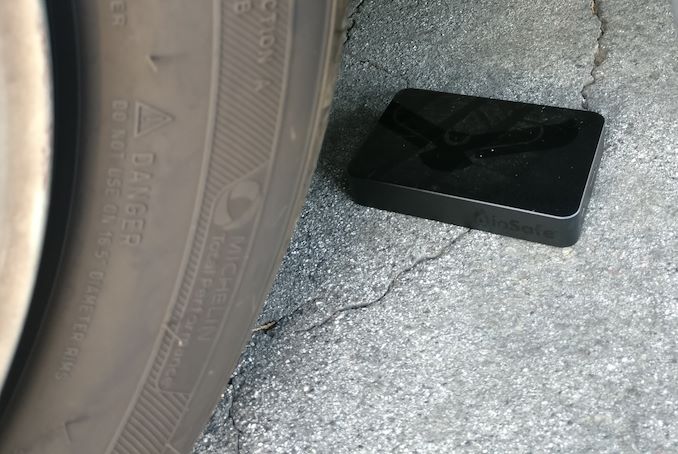
The CRU ioSafe Solo Hawk Rugged SSD - Moments after Getting Run Over by a Mini-Van
The Solo Hawk is crush-resistant up to 2500 lbs., and can withstand drops from as high as 10 ft. It carries a IP68 rating, and can operate even after submersion in 10 ft. deep salt water for as long as 3 days. It is also weather-proof and resistant to chemicals such as oils and hydraulic fluids. The SSD is also rated for operation at high altitudes (up to 30000 ft.). The data recovery service (DRS) and the bundled Genie Timeline backup software are excellent value additions. All these features carry a reasonable premium.
We would love to see CRU put out a diskless version of the Solo Hawk priced between $200 and $250. It is likely that pricing flexibility is lost due to the sourcing of the internal SSD from a third party. The ease of disassembly also leads us to believe that end users will have no trouble installing their own SSD in such a scenario. Unfortunately, CRU has released only a 500GB ($311) and a 1TB version ($385) of the Solo Hawk. If one needs a robust and rugged portable drive, and cost is not much of an issue, there is no doubt that the Solo Hawk Rugged Portable SSD is currently the best option in the market.

